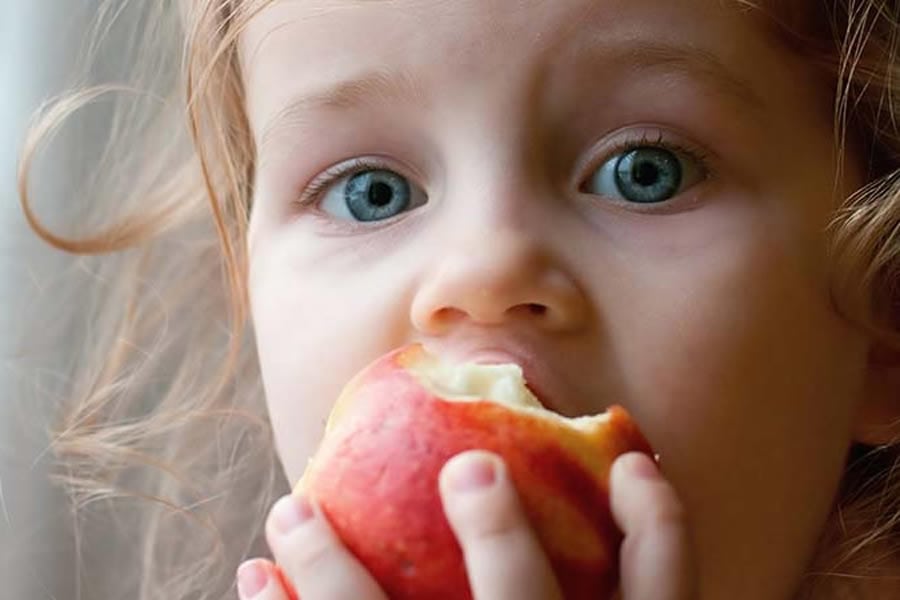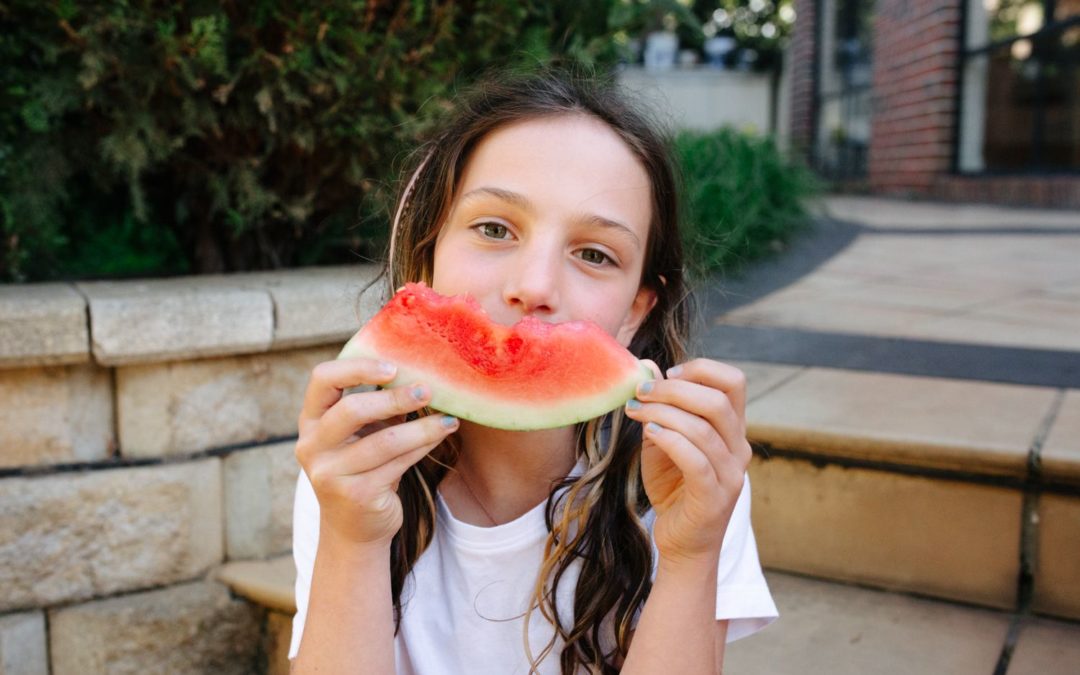Mindfulness is the buzz at the moment. But what exactly is it? And is it useful for eating?
Mindfulness, or the awareness of the present moment, is good for our health. When it comes to food, mindfulness helps us to listen to our bodies more. Mindful eating leads to greater enjoyment of food and mealtimes.
We are all born with the fantastic ability to eat intuitively. To eat when we are hungry and stop when we are satisfied. A baby will cry when hungry and stop eating and drinking when they are full. As we age, there is a tendency to lose this ability (or more accurately – override this ability). We need to help our children manage in this world of excess. We need to help our kids to listen to their internal hunger signs. To eat with awareness.
So let’s try some mindful eating to encourage you and your family to enjoy your food more, be more competent eaters and have happier family mealtimes.
Top tips for mindful eating for families
1. Let children listen to their own bodies
As a parent, you choose what food is served to your family. It is not your responsibility to make your children eat. I repeat, it is not your responsibility to make your children eat. And what your child eats is not a reflection of your parenting skills. It’s time to try and serve the food and relax a little (your job is done). Try and enjoy eating with your children (rather than stressing over what they are eating).
Sharing responsibility in feeding creates more peaceful mealtimes where children can have the opportunity to tune into their own bodies. They can decide how much to eat based on their own hunger and make food choices from what you served (read more about it here). This shows that you trust them to trust their bodies. You can also model this by turning into your own body’s hunger and fullness.
2. Eat as a family whenever possible
Role modelling is powerful. Whenever possible eat with your children (every family member does not have to be present to have a family meal, just an parent or carer with the children) and you can role model mindful eating. Create a nice atmosphere, that encourages mindful eating (tips for managing your own stress at mealtimes here). Maybe the children can help you set the table or pick some flowers. Try and allow enough time to eat, rather than having to rush off to bed or to an activity (can dinner be earlier?). Evenings with children are busy with younger children getting tired and older children having activities, so do your best to plan around this. (As a guide to how long children ideally should sit at the table at mealtimes: two minutes per child’s age). So you don’t need that much time but it is nice to eat without being told it is bed in 2 minutes or we have to leave. For children who eat very slowly, you can set a limit to end the meal (around 20 minutes as a guide).
3. Take a breath before you eat and be grateful
When you are showing your kids the way- perhaps try a ‘Grace’ of sort- no need to make it spiritual unless you would like to. Just a simple ‘Why don’t we all have a think about and be thankful for having this beautiful food on the table?’ or ‘Let’s all thank mum/dad for cooking this wonderful food today’ or “Before we eat let’s take a breathe and a look at the meal”. A moment to be present in the meal. You can also have lead up activities to get your children ready to come to the table and eat (more here).
4. Limit distractions
Turn off the tv, put your mobile and ipad away, take a break from the computer. Concentrate on eating and mealtime conversation. If you role model, you may be pleasantly surprised that the kids are happier to follow. A nice ritual we like to have is to have a dinner candle (helps keep little ones interested to stay at the table) which we keep at the table and light just before dinner or you might like some nice soft dinner music in the background. Or just some nice conversation about your day.
5. Slow down
In our fast paced world it is easy to forget this. Try eating more slowly so that you can enjoy the food. Be present in the moment. This helps you listen to your body more and enjoy the meal (both company and food) more. Try putting your knife and fork down between bites. For the children, make the table a nice place to be at. Chat with your children (try not to comment on what and exactly how much they have eaten) but talk about their day. They will be watching what and how you eat and learning from that.
6. Engaging your five senses
Take a look at the food you are about to eat. Notice the colour, the texture.
Does it have a smell? What does it smell like? Will the flavour will be similar to the smell?
As you are eating, notice the feel of the food in your hand or your fork. Is it hard or soft? Does it have the same feel in your month? As you are eating, does the texture change? Does the food soften or melt?
When you bite into the food, does it make a sound? Crunch? Loud or soft?
Now for the taste? It is tangy? Sweet? Interesting?
Rather than asking your children to try something or pressure them into having three more bites, talk about the senses of the food (and do it from a place of inquisition rather than using it as a form of pressure). What colours can you see? How crunchy is the carrot I just ate, did anyone hear it?
7. Get back in tune with your body
Think about if you are hungry and how hungry. Think about what you feel like eating, rather than what you should eat. Whilst eating, recognise when you are starting to feel satisfied. Ask your kids whilst they are eating if their stomachs are starting to feel full? When they say they have finished ask “has your tummy had enough?”
Calmer and less distracted family mealtimes,tuning into your body’s hungry or positive role modelling. What tip might you try first to encourage more mindful eating in both yourself and your family?










